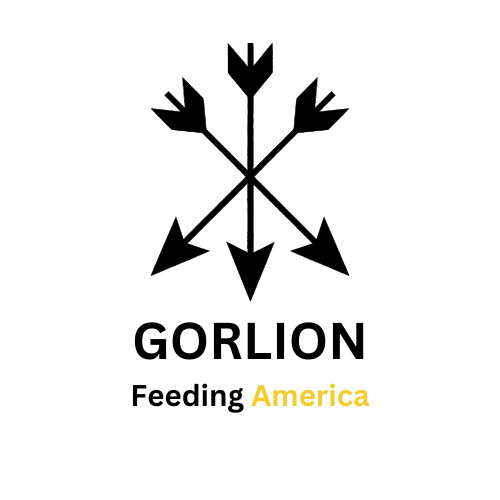Inflation, the rising cost of goods and services over time, is a fundamental economic force that impacts individuals, businesses, and entire industries. However, it is essential to recognize that not all sectors are affected equally. In this article, we will explore two distinct inflation scenarios: the deflationary trend in nonessential items and the higher inflation trajectory for essential commodities, particularly agricultural commodities. We will delve into the implications of these scenarios on food and beverage manufacturers, the difficult choices they must face, and how Gorlion Corporation’s innovative business model can help them navigate these challenges.
Deflation in Nonessential Items: A Brief Analysis
In recent discussions, the Federal Reserve has expressed its intention to continue raising interest rates, leading some experts to anticipate lower inflation rates. This projection is primarily based on the assumption that nonessential items, such as luxury goods and certain services, will experience deflationary pressures. The rationale behind this theory lies in consumers potentially reducing discretionary spending, resulting in decreased demand for nonessential goods.
While deflation in nonessential items may provide short-term relief for consumers, it raises concerns for businesses operating within these sectors. Lower demand and decreased pricing power can lead to reduced profitability and even business closures. Manufacturers and retailers in nonessential industries must carefully assess their strategies, focusing on cost efficiency, innovation, and maintaining a loyal customer base.
Higher Inflation in Agricultural Commodities: The Essential Challenge
Contrary to the deflationary expectations in nonessential sectors, the agricultural commodity market is poised for higher inflationary pressures. Agricultural commodities, including grains, livestock, and soft commodities like coffee and sugar, play a critical role in the global food supply chain. As such, any significant shifts in their prices can have far-reaching consequences.
Several factors contribute to the anticipated surge in agricultural commodity prices. Firstly, global population growth continues to increase the demand for food, putting strain on limited resources. Climate change-induced events, such as extreme weather patterns and natural disasters, further disrupt agricultural production, leading to supply shortages and increased costs.
Moreover, rising input costs, including labor, energy, and transportation, further add to the inflationary pressures on agricultural commodities. These cost increases are often passed on to food and beverage manufacturers, who rely heavily on these raw materials. Consequently, manufacturers are faced with a difficult choice: absorb the higher costs and experience lower profitability or pass on the inflationary burden to consumers through higher prices.
Impact on Food and Beverage Manufacturers
The higher inflationary trajectory in agricultural commodities presents significant challenges for food and beverage manufacturers. As the cost of essential inputs increases, manufacturers face mounting cost pressures that squeeze profit margins. The difficult decision between lower profits or passing on the cost to consumers forces manufacturers to carefully strategize to maintain their competitive position while ensuring sustainability.
One approach food and beverage manufacturers can consider is optimizing their supply chain and production processes. Streamlining operations, reducing waste, and enhancing efficiency can help offset some of the increased costs associated with higher agricultural commodity prices. Investing in technology and automation can lead to long-term savings and improved profitability.
Additionally, manufacturers may explore alternative ingredients and formulations to mitigate the impact of rising commodity prices. Adapting recipes, substituting certain ingredients, or focusing on products with lower commodity reliance can provide avenues for cost management without compromising product quality.
Preparing for the Future: Strategies for Food Manufacturers
To navigate the challenging inflation landscape, food and beverage manufacturers can adopt several strategies:
1. Collaboration within the Supply Chain: Building strong relationships with suppliers, distributors, and customers can enhance efficiency and foster innovation. Collaborative partnerships enable negotiation of favorable pricing agreements, secure long-term contracts, and provide stability amidst market uncertainties.
2. Risk Management and Hedging Strategies: Engaging in risk management techniques like hedging can help food manufacturers mitigate the impact of higher agricultural commodity prices. Futures contracts and options can provide a means to lock in prices in advance, allowing manufacturers to secure favorable rates and protect against sudden price surges.
3. Diversification of Sourcing: Exploring alternative sourcing options for agricultural commodities can help mitigate risks associated with price fluctuations. By identifying suppliers from different regions, manufacturers can diversify their supply chains, reducing their vulnerability to disruptions and price shocks in a single market.
4. Product Innovation and Differentiation: R&D efforts focused on product innovation can help food manufacturers develop new offerings that are less reliant on expensive agricultural commodities. Exploring alternative ingredients, finding sustainable substitutes, or creating products with longer shelf lives can provide resilience against price volatility.
5. Market Research and Forecasting: Staying informed about market trends, conducting thorough research, and leveraging reliable forecasting tools can provide valuable insights into future price movements. By understanding market dynamics and anticipated price trends, manufacturers can make informed decisions regarding pricing strategies, inventory management, and procurement.
6. Consumer Education and Communication: As food manufacturers face the challenge of passing on increased costs to consumers, effective communication becomes crucial. Educating consumers about the factors impacting price increases, highlighting the value of high-quality ingredients, and showcasing sustainable practices can help foster understanding and maintain brand loyalty.
Gorlion Corporation: Navigating the Inflation Landscape
In these uncertain times, Gorlion Corporation stands as a beacon of innovative solutions and collaboration within the agricultural commodity trading industry. Our market maker business model, enhanced by artificial intelligence, allows us to navigate the complex dynamics of inflation and offer unique insights to our clients.
With a deep understanding of inflationary pressures, we provide our partners with comprehensive analysis and actionable strategies to optimize their supply chains, manage costs, and protect their businesses. Through collaborative relationships and advanced forecasting techniques, we empower food and beverage manufacturers to make informed decisions, ensuring their long-term success.

